At a time when virtually the entire industry seems determined to confine the internal combustion engine to the history books, Mazda goes… against the grain! Gladly.
It's not the first time Mazda has done it, and the last time it was right. Will the same happen again? The Japanese believe so.
The decision to continue to invest in combustion engines was announced last year, through the new generation of SKYACTIV-X engines. And we had the opportunity to experience this new SKYACTIV-X engine, live and in color, before its official arrival on the market in 2019.
That's why you visit Reason Automotive every day, isn't it?
Get ready! The article will be long and technical. If you reach the end you will have a compensation…
Combustion engine? And the electric ones?
The future is electric, and Mazda officials also agree with that statement. But they disagree on the predictions that give the combustion engine as “dead”… yesterday!
The key word here is “future”. Until the 100% electric car is the new “normal”, the transition to worldwide electric mobility will take decades. Furthermore, the production of electricity from renewable sources will also have to grow, so that the promise of zero emissions from electric cars is not a sham.
Meanwhile, it will be up to the “old” internal combustion engine to be one of the main drivers of reducing CO2 emissions in the short and medium term — it will continue to be the most common type of engine for decades to come. And that is why we must continue to improve it. Mazda has taken on as its mission to extract as much efficiency as possible from the combustion engine in pursuit of lower emissions.
“Committed to the principle of the right solution at the right time”, as Mazda puts it, drives the brand in a constant search for the best solution — not the one that looks best on paper, but the one that works in the real world. It is in this context that the SKYACTIV-X arises, its innovative and even revolutionary internal combustion engine.
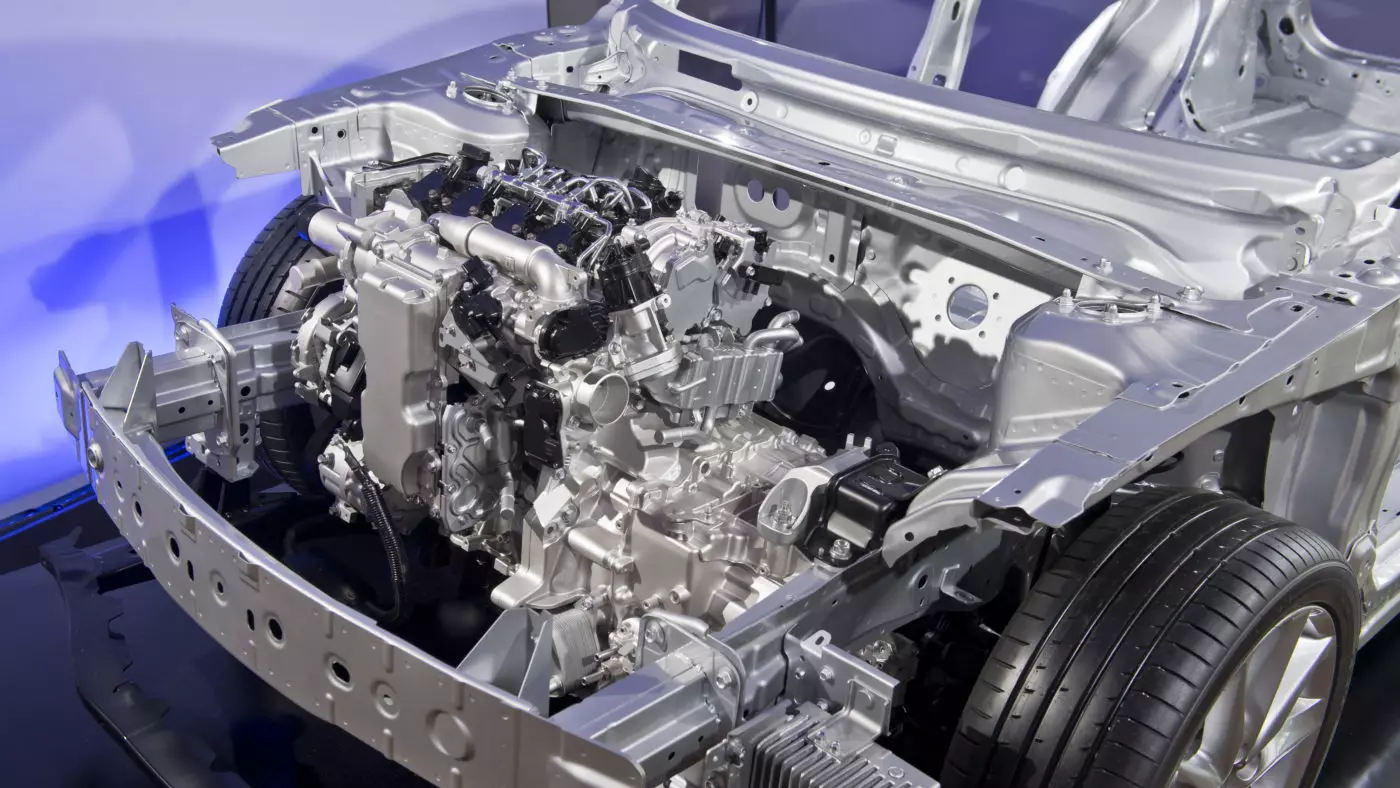
Why revolutionary?
Simply because the SKYACTIV-X is the first gasoline engine capable of compression ignition — just like Diesel engines… well, almost like Diesel engines, but we're off.
Compression ignition — that is, the air/fuel mixture means instantly, without a spark plug, when compressed by the piston — in gasoline engines has been one of the “holy grail” pursued by engineers. This is because compression ignition is more desirable: it's much faster, instantly burning all the fuel in the combustion chamber, allowing you to do more work with the same amount of energy, resulting in more efficiency.
The faster combustion also allows for a leaner air/fuel mixture in the combustion chamber, that is, an amount of air much greater than that of fuel. The advantages are easy to understand: combustion takes place at lower temperatures, resulting in less NOx (nitrogen oxides), and there is less wasted energy during engine warm-up.
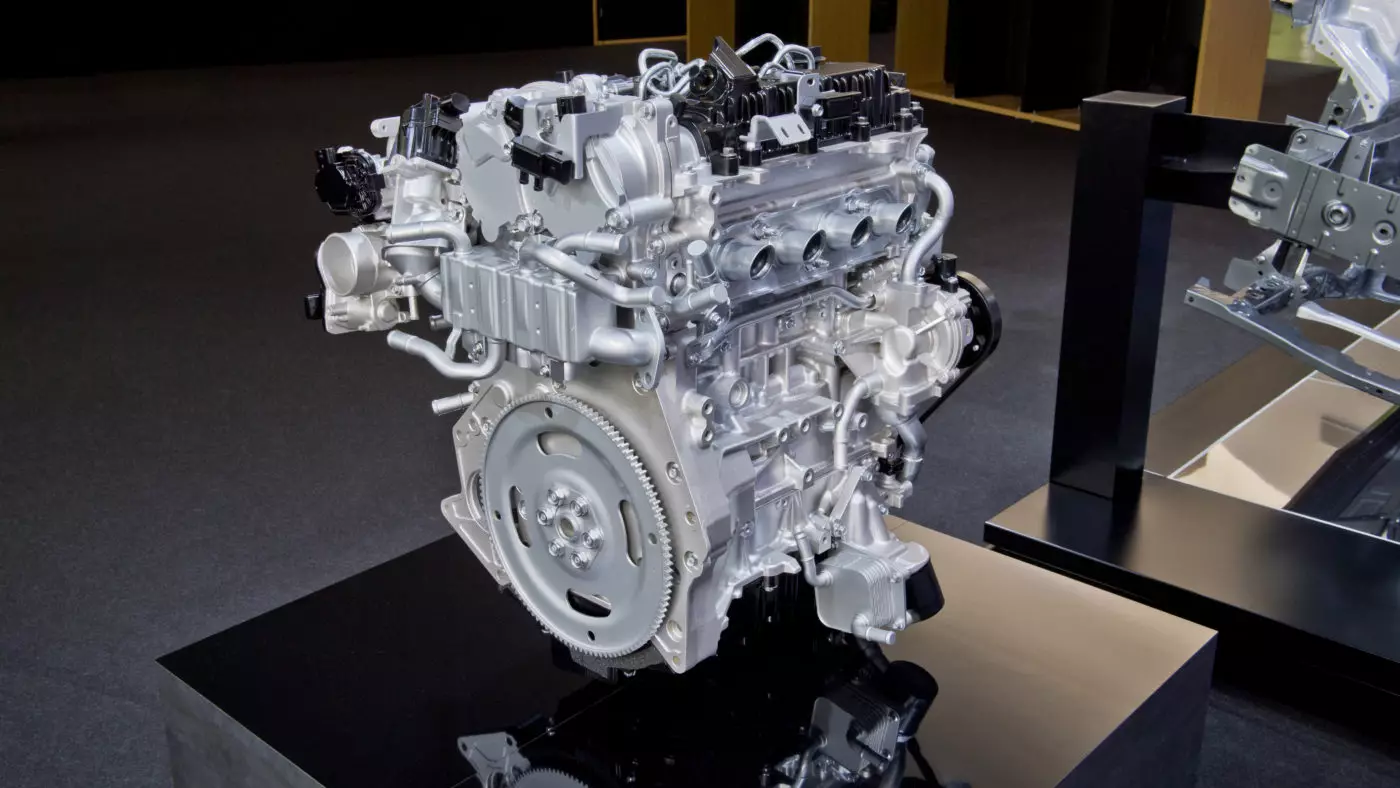
The problems
But compression ignition in gasoline isn't easy — not that it hasn't been tried by other builders in recent decades, but none have come up with a viable solution that could be commercialized.Homogeneous Compression Ignition Charging (HCCI), the underlying concept of compression ignition, has so far only been achieved at low engine speeds and at low load so, for practical reasons, spark ignition (spark plug) is still necessary. for high regimes and loads. The other big problem is control when compression ignition happens.
The challenge is, therefore, to be able to transition between the two types of ignition in a harmonious way, which forced Mazda to improve and control the various factors that allow gasoline and lean mixture compression ignition.
The solution
The “eureka” moment—or is it the moment when there was a spark? ba dum tss… — which made it possible to solve these problems, happened when Mazda engineers challenged the conventional idea that combustion by compression does not require spark plugs: “if the transition between different combustion modes is difficult, is it, first of all, do we really need to make that transition?” Herein lies the foundation of the SPCCI system — SPark-Controlled Compression Ignition.
In other words, even for combustion by compression, Mazda uses spark plugs, allowing a smooth transition between combustion by compression and spark combustion. But if you use a spark plug can it still be called compression combustion?
Of course! This is because the spark plug serves, above all, as a control mechanism when combustion by compression takes place. In other words, the beauty of SPCCI is that it uses the combustion methodology of a diesel engine with the timing methodology of a gasoline engine with a spark plug. Can we clap our hands? We can!

The goal
The engine was designed in such a way as to create the necessary conditions of temperature and pressure in the combustion chamber, to the point where the air/fuel mixture — very lean, 37:1, about 2.5 times more than in an engine conventional gasoline — stay on the verge of ignition at top dead center. But it is the spark from the spark plug that starts the process.
This means a small, richer air/fuel mixture (29:1), injected at a later stage, which gives rise to a fireball. This further increases the pressure and temperature in the combustion chamber, so that the lean mixture, already close to the point where it is ready to detonate, does not resist and ignites almost instantly.
This ignition control embarrasses me. Mazda is capable of doing this at over 5000 rpm and I can't even light the barbecue at first…
A solution that now seems so obvious, but that required new "tricks":
- the fuel has to be injected at two different times, one for the lean mixture that will be compressed and the other for the slightly richer mixture that will be ignited by the spark plug.
- the fuel injection system must have a super high pressure, to allow a quick vaporization and atomization of the fuel, dispersing it immediately throughout the cylinder, minimizing the compression time
- all cylinders have a pressure sensor, which constantly monitors the aforementioned controls, compensating, in real time, for any deviations from the intended effects.
- use of a compressor — is the essential ingredient to keep compression high, as SKYACTIV-X uses the Miller cycle, which lowers compression, allowing for the desired lean mix. The extra power and torque are a welcome consequence.
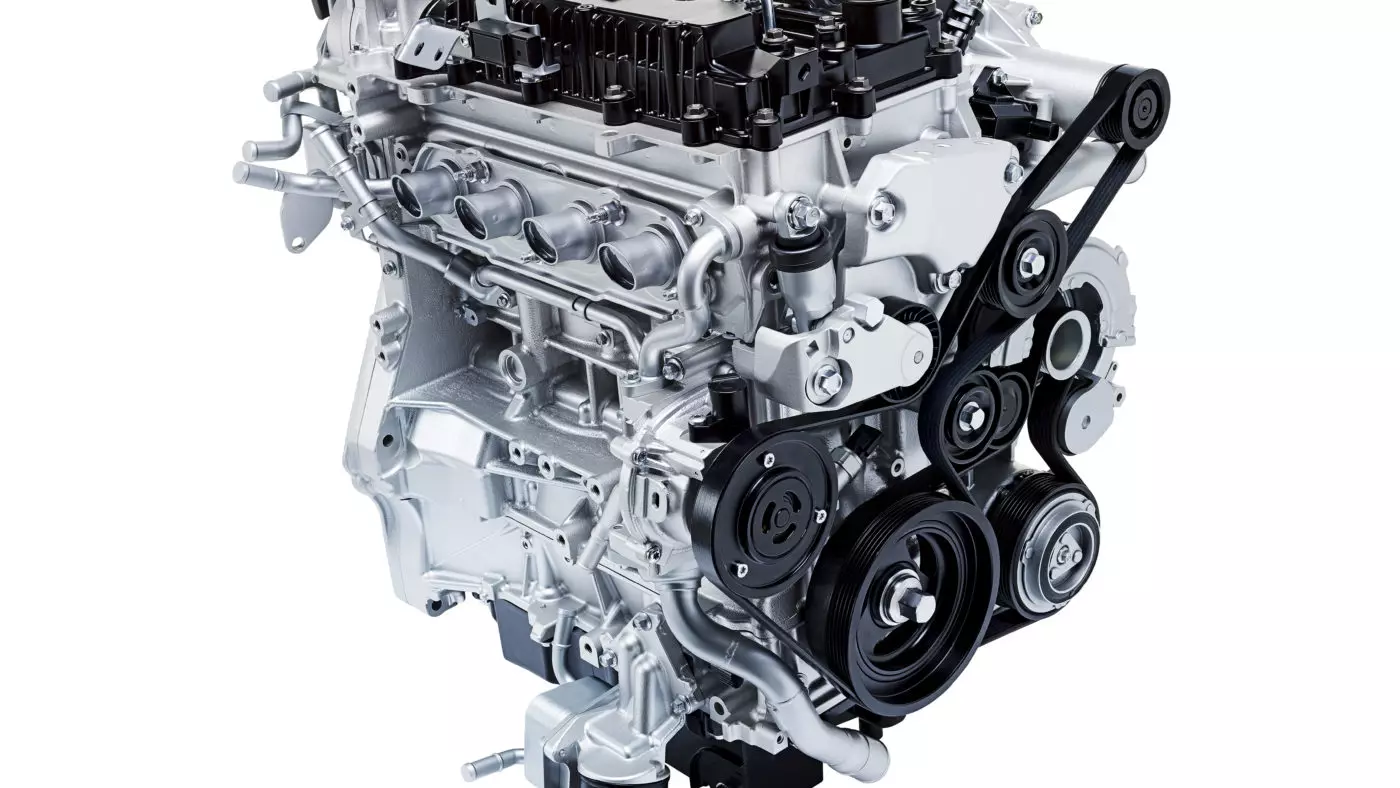
Back part
Benefits
The SPCCI system allows for expansion of combustion by compression over a much wider range of regimes, therefore, more efficiency in more usage scenarios. Compared to the current SKYACTIV-G, the brand promises lower consumption between 20 to 30% depending on usage . The brand says that the SKYACTIV-X can even match and even exceed the fuel economy of its own SKYACTIV-D diesel engine.
The compressor allows for higher intake pressure, ensuring better engine performance and responsiveness. The greater efficiency in a wider range of revs also allows you to run at higher revs, where there is more power available and the engine's response is superior.
Despite the complexity of the operation, the constant use of the candle has, interestingly, allowed for a simpler design — no variable distribution or variable compression rate is necessary — and better, this engine runs on 95 gasoline , as less octane is better for compression ignition.
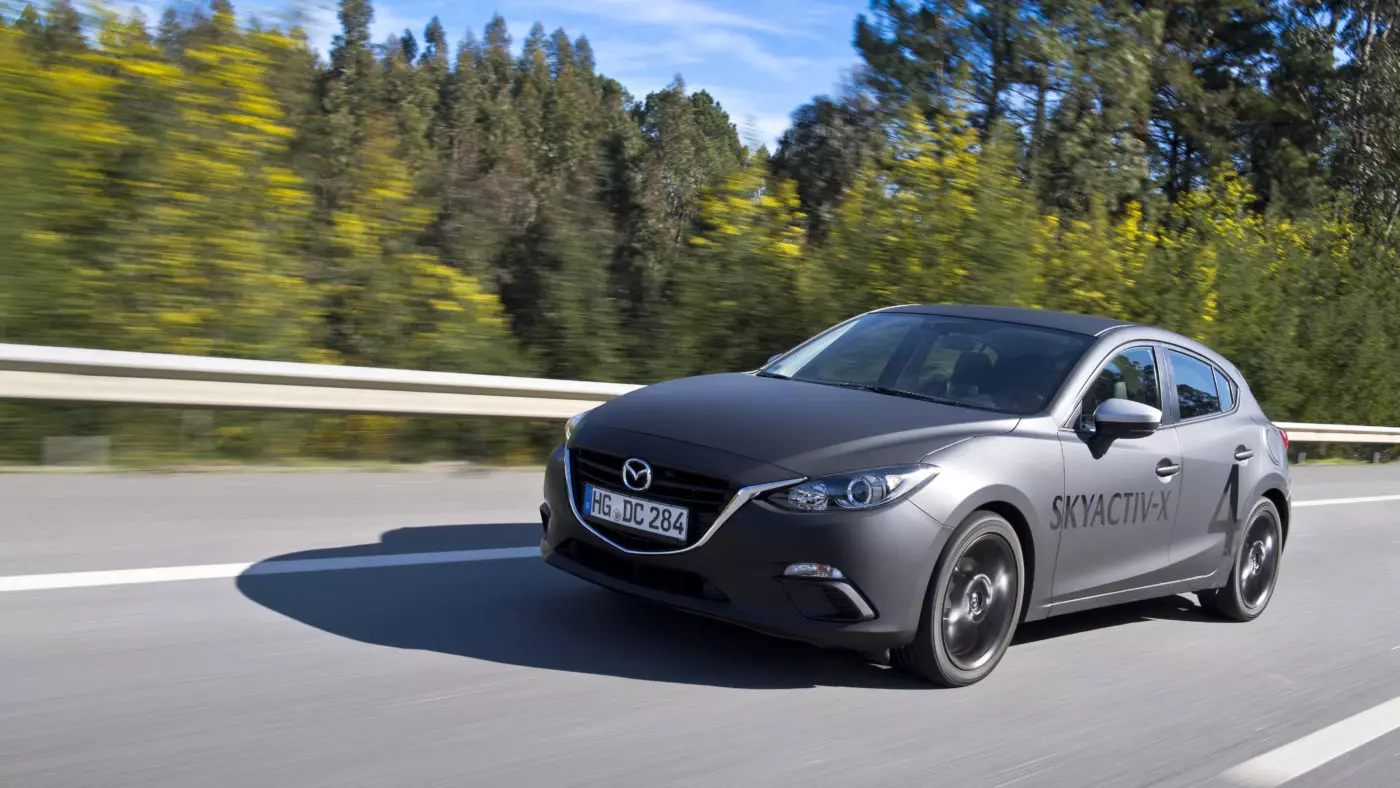
Finally, behind the wheel
The text is already very long, but it is necessary. It's important to understand why all the “buzz” around this engine — it really is a remarkable advance when it comes to combustion engines. We will have to wait until 2019 to verify all Mazda claims about it, but considering what has been promised and demonstrated with SKYACTIV-G, expectations are high for SKYACTIV-X to deliver on everything it promises to do.
Fortunately, we already had the opportunity for an early test. Dynamic contact with SKYACTIV-X-equipped prototypes, hidden under the familiar Mazda3 bodywork, was foreseen, although it had little or nothing to do with the familiar Mazda3 — also the base architecture under the bodywork is now second-generation .
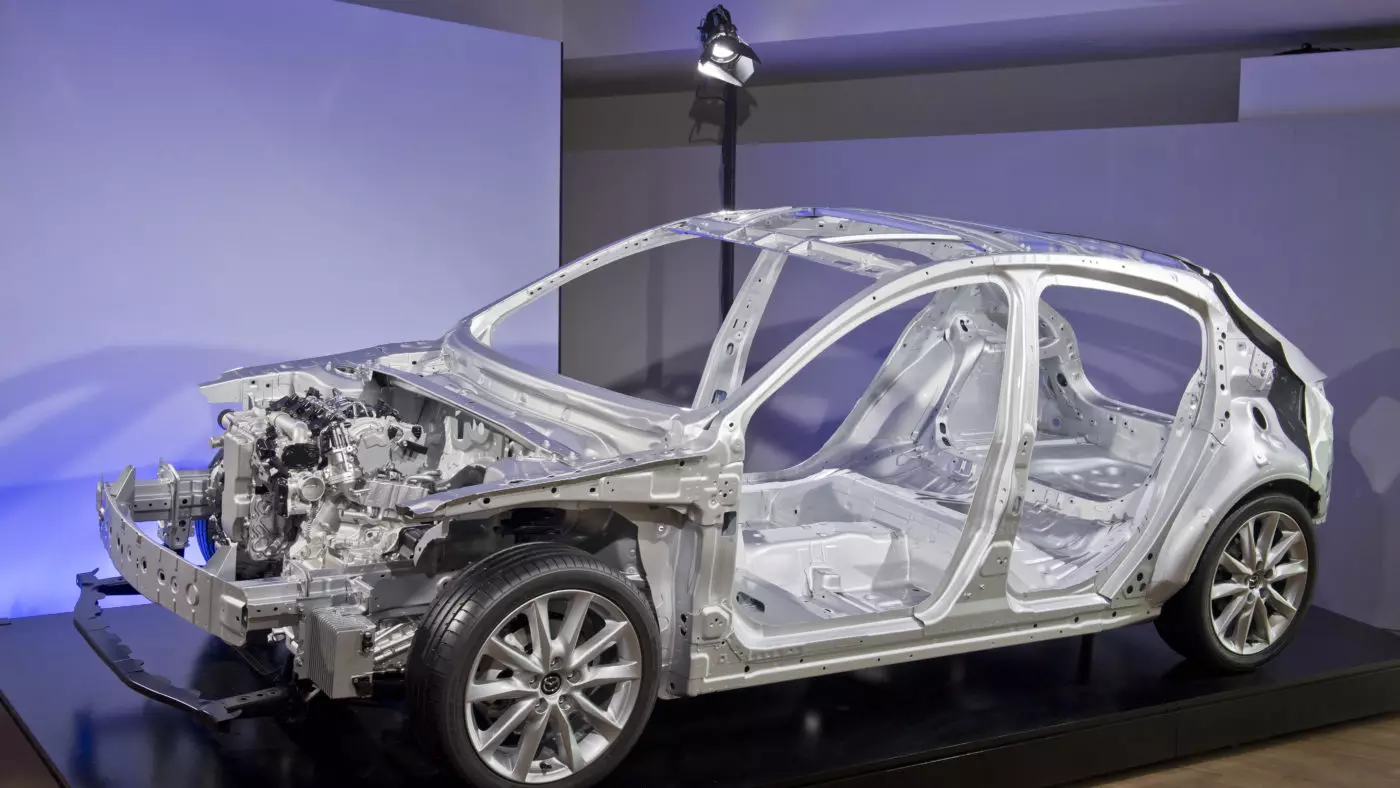
SKYACTIV is also synonymous with new platform/structure/body solutions. This new generation promises greater torsional rigidity, lower levels of noise, vibration and harshness (NVH - noise, vibration and harshness) and even new seats were developed, promising a more natural posture, which will allow for greater levels of comfort.
We drove two versions of the prototypes — one with a manual gearbox and the other with an automatic gearbox, both with six speeds — and we were even able to compare the difference with the current 165hp Mazda3 2.0 with a manual gearbox, to better discern the differences. Luckily it was the first car I drove, allowing me to check the good engine/box (manual) set.

The difference between SKYACTIV-X (engine of the future) and SKYACTIV-G (engine of today) couldn't be clearer. Mazda's new engine is far more energetic, regardless of rev range — the extra torque available is pretty obvious. Like the “G”, the “X” is a 2.0 liter unit, but with juicier numbers. Mazda aims for a power of around 190 hp — that are noticeable, and well, on the road.
It surprised by its responsiveness, from the lowest regimes, but the best compliment you can pay to the engine, is that despite being a unit in development, it already convinces more than many engines on the market.
The fears that, as there is compression ignition like a Diesel, it would bring some of the characteristics of this type of engine, such as greater inertia, short range of use, or even sound, were completely unfounded. If this is the future of combustion engines, come on!

The interior of the prototype — clearly the interior of a car in development — came with a screen positioned above the center console with three numbered circles. These went off or on, depending on the type of ignition or mixture that occurred:
- 1 — spark ignition
- 2 — compression ignition
- 3 — leaner air/fuel mixture where maximum efficiency is obtained
"Small" engines for Portugal?
Aberrant Portuguese taxation will make this engine a marginal choice. The 2.0 liter capacity is ideal for several reasons, not least because it is a well accepted capacity in most world markets. The engineers responsible for the SKYACTIV-X mentioned that other capacities are possible, but for now it is not in the brand's plans to develop engines with a capacity below 2.0 liters.
The variety of situations where compression-ignition occurred — pretty much just switching to spark ignition, when exploring higher engine speeds or when we slammed the throttle down — was impressive.
As for mode 3, it clearly required a more controlled driving, especially with the manual gearbox, where it proved difficult — or lack of sensitivity in the right foot — for it to appear on the screen. The automatic teller machine — scaling for the North American market —, although less pleasant to use, turned out to be much easier to “light up” circle number 3.
Consumptions? We do not know!
I did ask, but no one came up with concrete numbers. The on-board computer was “strategically” covered with adhesive tape, so for now we can only rely on the brand's statements.A final note for the prototypes that were already part of the new architecture — more rigid and allowing for greater levels of interior refinement. It's important not to forget that these were development prototypes, so it was surprising that these were more refined and soundproofed than the current production Mazda3 — the next generation promises…
New Mazda3 to be the first SKYACTIV-X
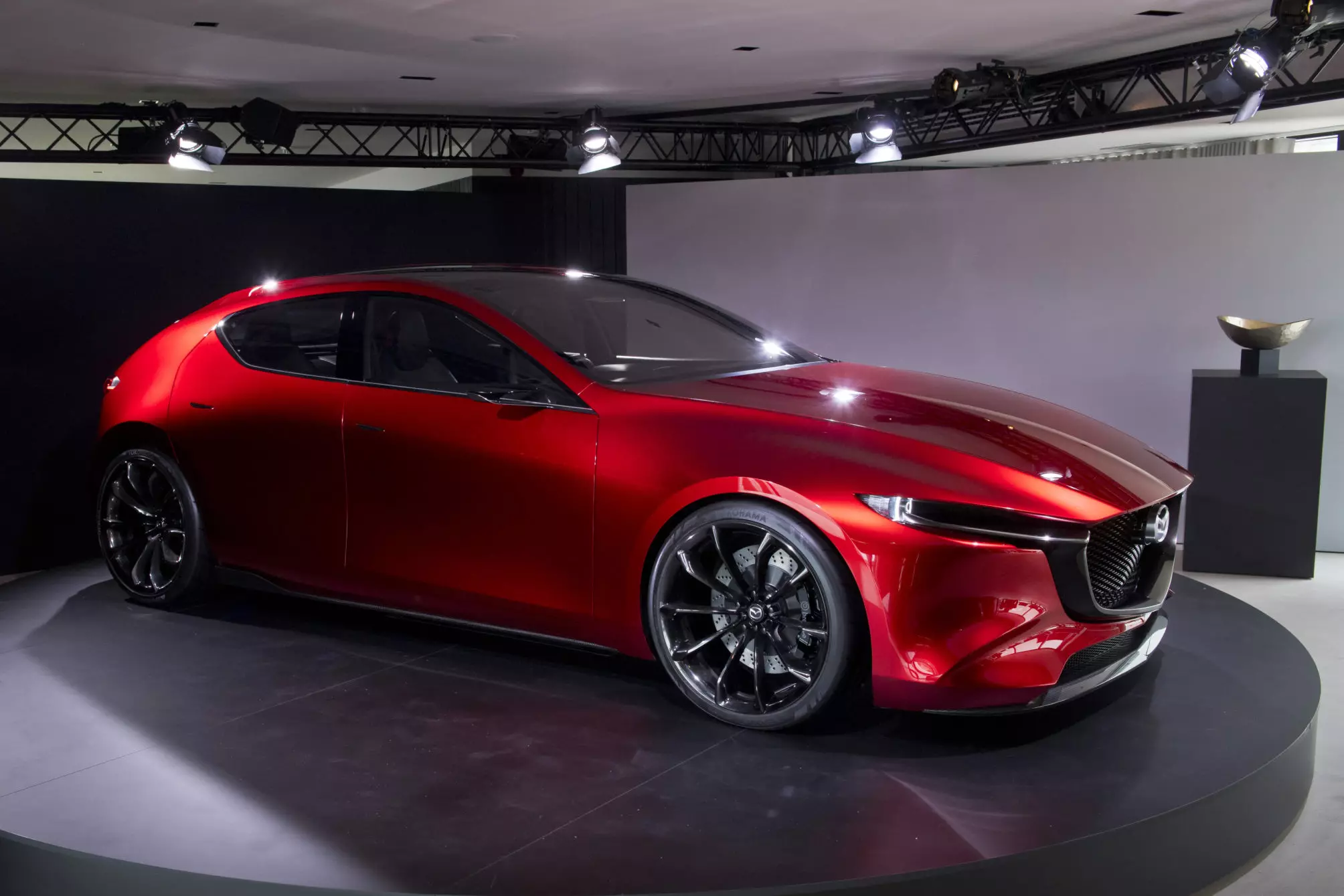
Most likely, the Mazda3 will be the first model to receive the innovative SKYACTIV-X, so it's not until sometime in 2019 that we'll really be able to see the engine's efficiency gains.
As for the design, Kevin Rice, head of Mazda's European design center, told us that the overall look of the Kai Concept is producible, meaning it's not too far from the final version of the future Mazda3 — forget it's mega-wheels, mini-rear view mirrors or exposed optics…
85-90% of Kai Concept's design solutions could go into production.
You have reached the end of the article… finally!
The promise is due, Rui Veloso already said. So here is a kind of compensation. An epic kamehameha recalling the events inside the combustion chambers of the SKYACTIV-X engine.
